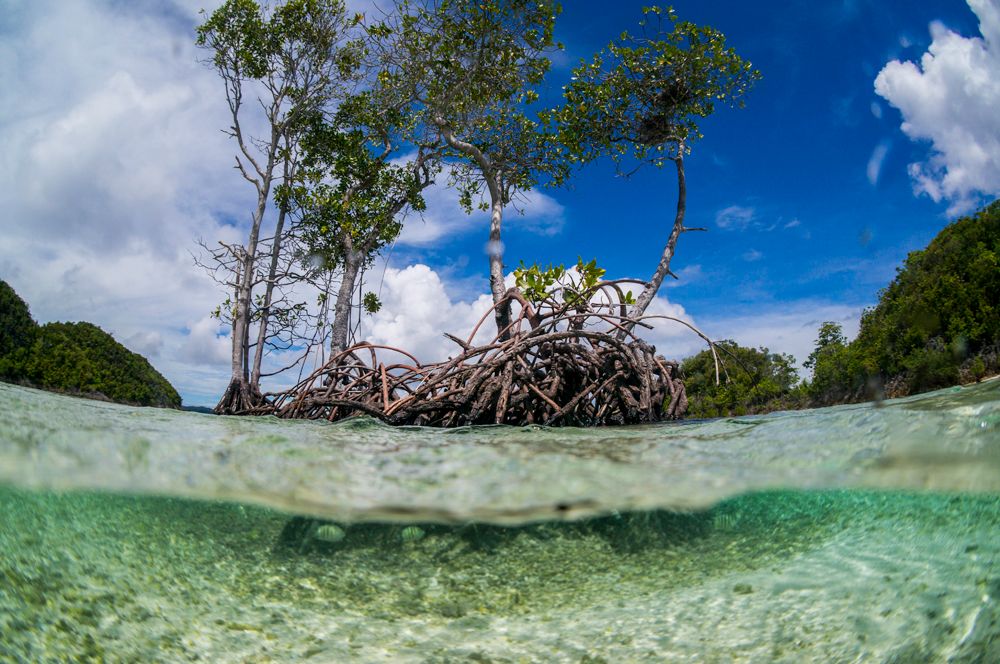
The isolated islands of Raja Ampat are truly unique. Centuries of geologic upheaval in one of the most geologically active places in the world have not only created impressive structures above ground, but also evolved myriad habitats below the surface. Mangroves meet sea grass beds, coral reefs greet step cliffs in this central meeting and distribution point for marine life. Strong currents converge from all directions, channeling plankton rich waters, mixing pelagic larvae and connecting these isolated islands from several distinct regions, all combining to make this group of islands the most biologically diverse on the planet.

Home to 1,437 unique fish species (and counting) including many endemics, a wide variety of soft and hard corals and with a lot of reef still in excellent condition, the region holds biological significance on an international scale. However, despite being so isolated, the same threats that pressure reefs around the world occur here as well and are a growing concern for the future. Several decades of shark finning has reduced populations to a small fraction of what they once were while the live seafood trade from China and Hong Kong have gone through and continue to exploit spawning aggregations of vulnerable high value fish. Indonesia has also suffered from widespread and extremely destructive bomb fishing which is still a practice carried out to this day.

Prior to 2000, West Papua was essentially closed off due to independence movements but recently the region’s biological significance has really moved into the international spotlight. Through assistance from non-government organistaions such as The Nature Conservancy and Conservation International who have carried out rapid biodiversity assessments and provided foundations in conservation efforts, through education, the locals are beginning to understand and appreciate the importance of Raja Apat’s biodiversity, and the threats to it.
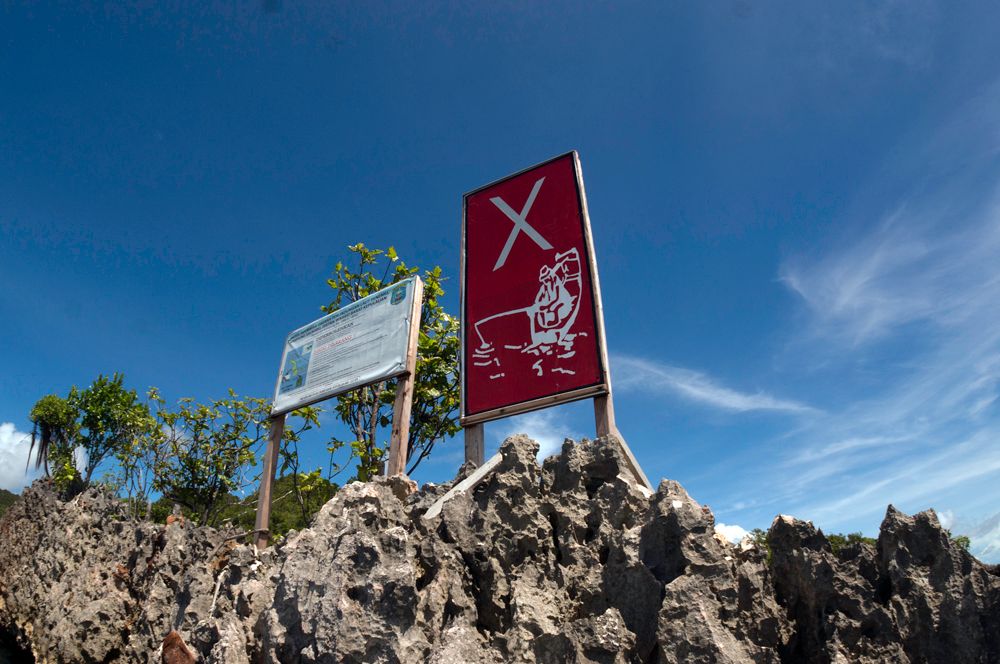
With the assistance of scuba diving tourism which has boosted rapidly in the region there have been some very promising steps towards an environmentally and economically sustainable future for Raja Ampat. In 2007, the government declared a network of seven marine protected area’s (MPA’s) that together cover approximately 45% of the island’s coral reefs and tourists pay and entrance fee that funds conservation projects and assists to support local communities. Also very recently the whole region has been declared as a Shark Sanctuary meaning no shark fishing at all, anywhere.
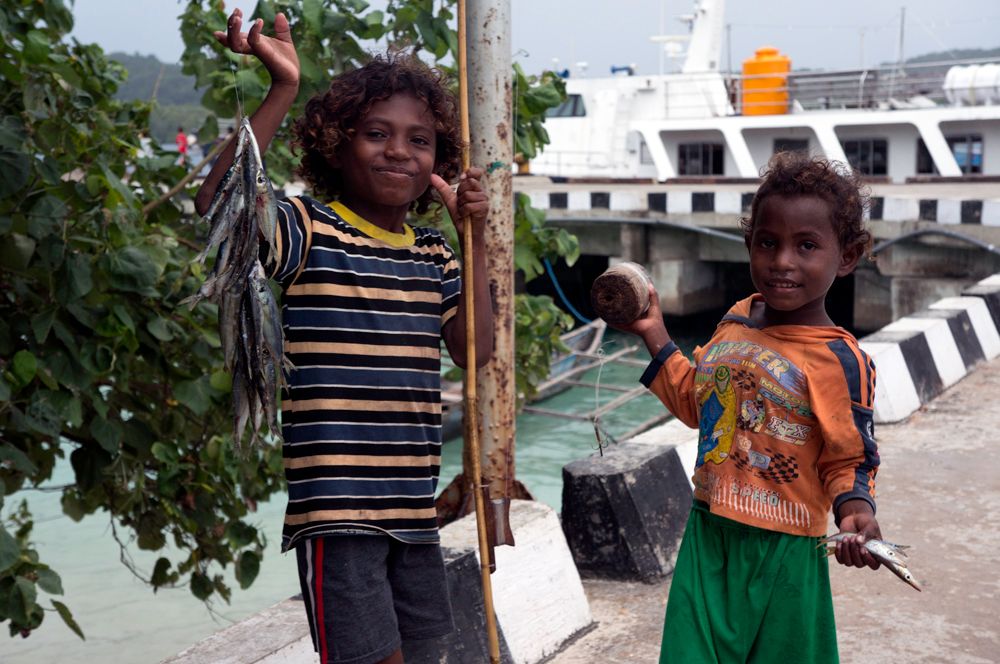
In theory, it looks as though the future is bright for the people of West Papua, however there is still a long way to go. As the population growth and population transmigration to Papua from western Indonesia continue and intensify, stresses to local coral reefs will increase with increasing population and development. Importantly there are also still a lot of highly important habitats which are still highly threatened and remain highly vulnerable and the MPA’s will only be effective with continued support, proper management and most importantly, enforcement.
In November, 2011, after years of meetings, drafted plans and extensive preparation, a UK based charity Sea Santuaries Trust (SST) reached an agreement with the local communities of the three villages on the Fam islands to create a sanctuary zone covering 70,000 Ha of previously unprotected reefs, islands and mangroves set aside as no fishing conservation areas by the local communities that have traditional ownership of the area. Their aims and intentions are to help local people to protect their natural inheritance for the future through empowering passionate local leaders to manage their own resources.
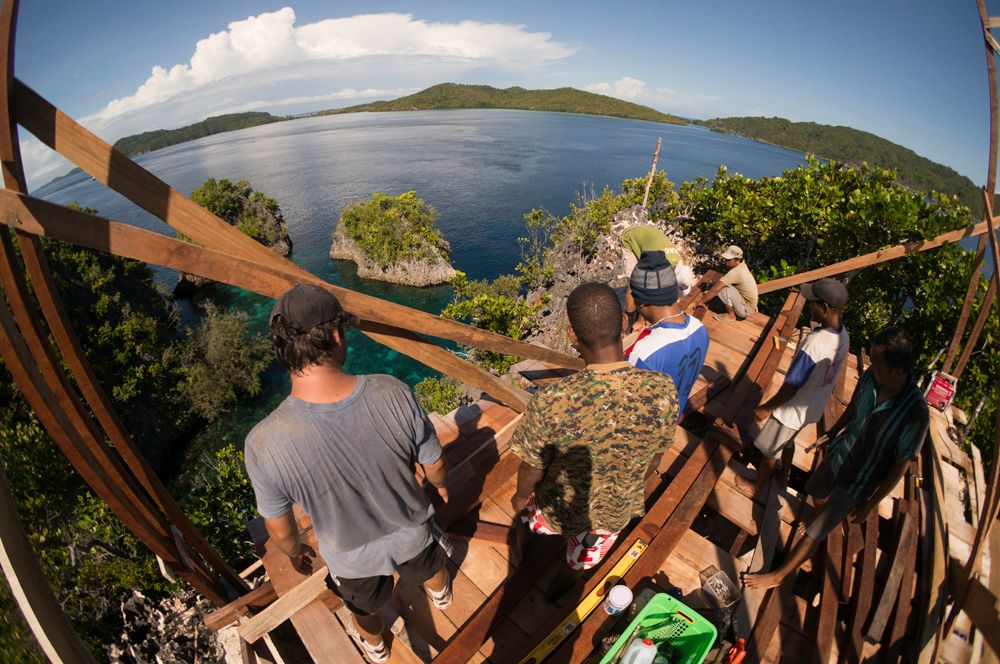
Through the support of SST, local leaders will be able to manage and patrol their new sanctuary zone with the power to enforce laws, board boats, inspect licenses, hand out fines, and even confiscate equipment. With the construction of a new lookout post, education and training, the locals will work in shifts to keep an eye out 24/7 for illegal activities and by June 2014, the target is for local illegal fishing to be completely eliminated in the area and illegal fishing by outsiders is reduced by 95%.
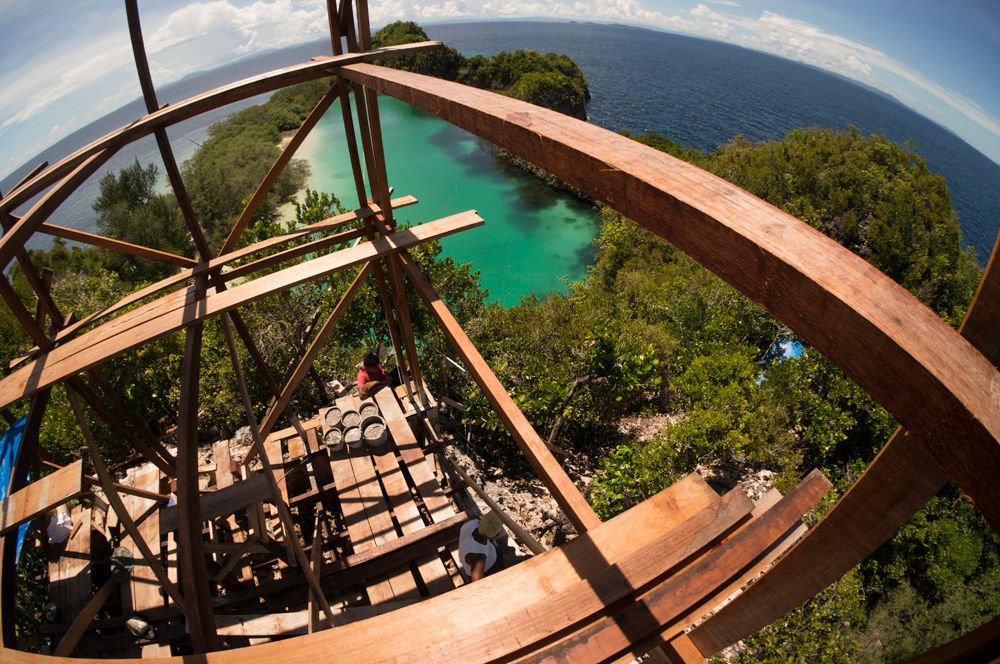
A fundamental step in monitoring the success of any MPA, is to create a scientific baseline of the current state of the ecosystem including assessing the diversity and abundance of key species. I was invited to assist a team of biologists lead by Dr. Mateus Baronio, to conduct comprehensive fish and coral baseline surveys in the area. Over several weeks, we conducted forty five transect surveys for fish diversity using indicator groups, seventy five benthic cover transects and set up six sets of permanent transects at 10m and 20m depth for long term monitoring.
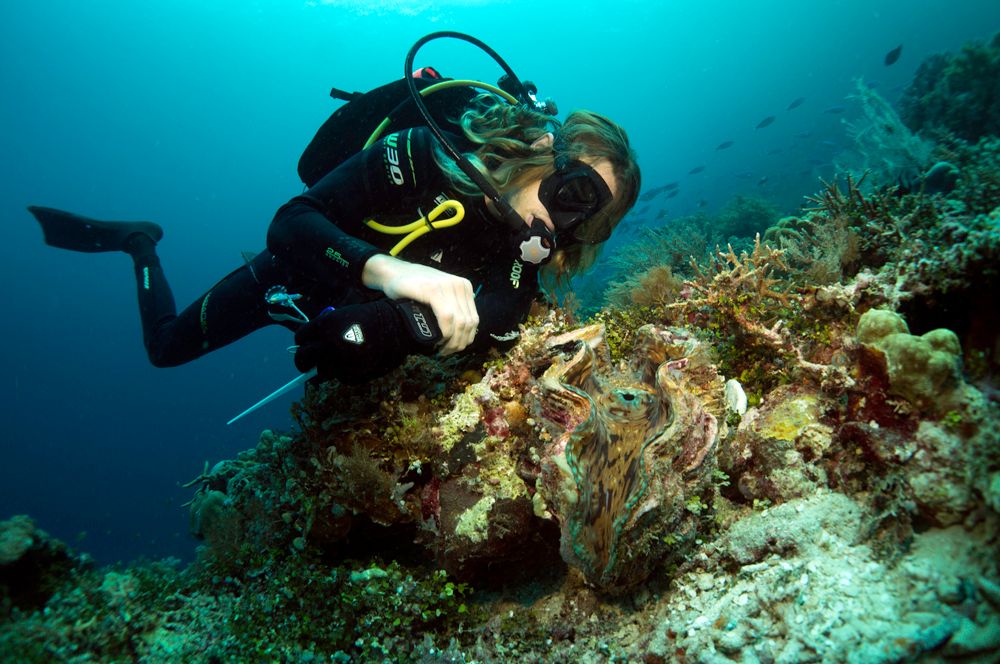
The coral reef was amongst some of the best I have seen in my life, with a stunning variety of soft and hard corals which exhibited their vibrant colours, showing no signs of bleaching or coral disease and a very limited numbers of crown of thorns starfish. The surprising thing for me however, was when I came across the areas which had been bomb fished. You could be swimming over an extremely healthy dive site completely covered in coral and bursting with life and then you just hit a line where it had been bombed and destroyed.

As for fish, we found promising signs for the future with the region still supporting a residual population of many commercially important fish such as coral trout and grouper which had been extensively targeted by the live seafood trade in the past and thought to have been almost completely wiped out. The mangrove rimmed bays of the island act as valuable nursery grounds for these species, and it was evident there were good numbers of juveniles. Helen Newman, the founder SST explained “We have a lot of juveniles coming in, but it’s going to take some time for the populations to stabilize and come back to where it should be”. Further promising signs came from the relatively good numbers of shark sightings with usually at least one or two blacktip reef sharks every other dive.
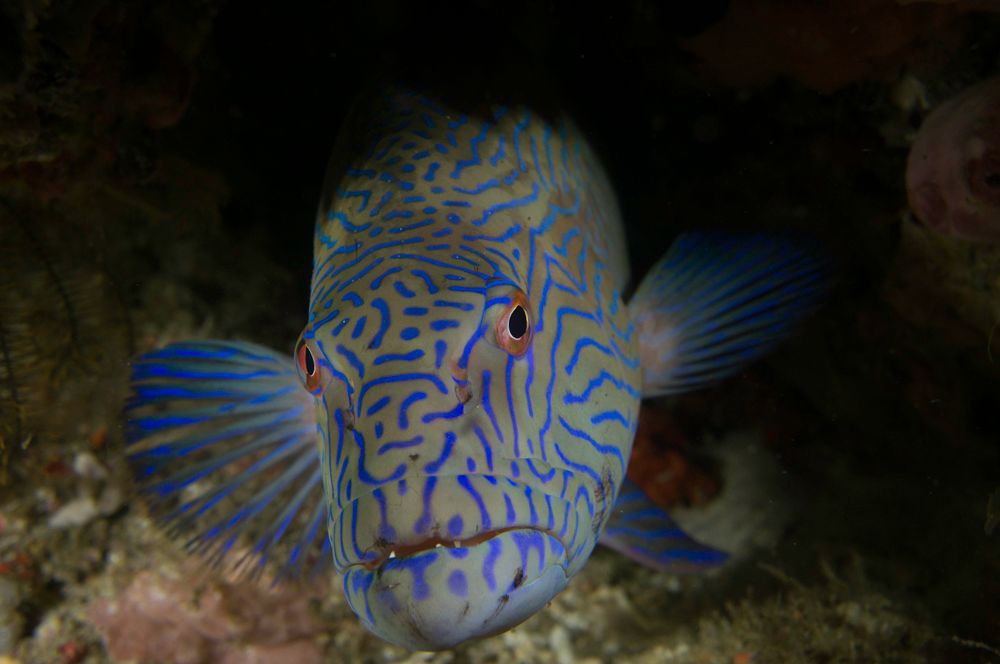
Saving the coral reefs of Papua will require the assistance of many people, but fortunately Papua’s reefs remain in better condition than many reefs elsewhere in the world, providing conservationists with an exceptional opportunity to be proactive in conservation activities. If you’re interested to find out how you can help make a difference in the area with this really important work, SST really appreciate the support of volunteers over a range programs which they conduct with the local communities to help them improve livelihoods. For more information take a look at their volunteer website, I would highly recommend the experience and thoroughly enjoyed each day in this beautiful part of the world.

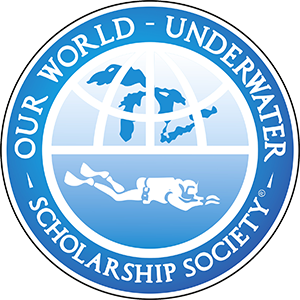
I’ve just been informed the fish count has now reached over 1500! With the latest official count of 1510 species!